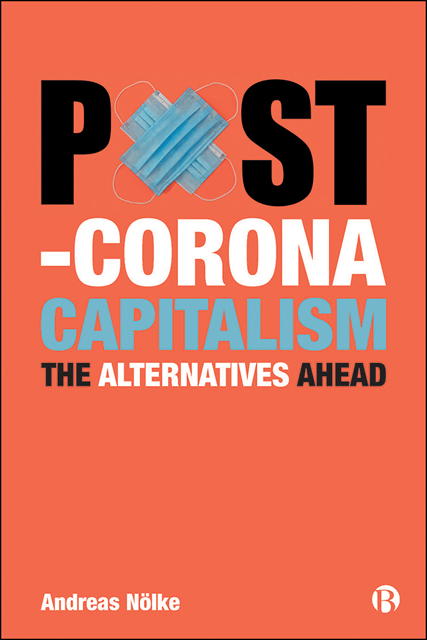Book contents
- Frontmatter
- Dedication
- Contents
- List of Abbreviations
- Acknowledgements
- Preface
- 1 Introduction: Confronting a Multidimensional Crisis of Capitalism
- Part I Capitalism and Society
- Part II Domestic Institutions of Capitalism on the Demand Side
- Part III Domestic Institutions of Capitalism on the Supply Side
- Part IV The International Institutions of Capitalism
- Part V Anthropocene Capitalism
- Part VI Geo-economic Shifts in Global Capitalism
- Part VII Ideologies in Contemporary Capitalism
- References
- Index
17 - Global Production Networks: Diversification or Reshoring?
Published online by Cambridge University Press: 13 October 2022
- Frontmatter
- Dedication
- Contents
- List of Abbreviations
- Acknowledgements
- Preface
- 1 Introduction: Confronting a Multidimensional Crisis of Capitalism
- Part I Capitalism and Society
- Part II Domestic Institutions of Capitalism on the Demand Side
- Part III Domestic Institutions of Capitalism on the Supply Side
- Part IV The International Institutions of Capitalism
- Part V Anthropocene Capitalism
- Part VI Geo-economic Shifts in Global Capitalism
- Part VII Ideologies in Contemporary Capitalism
- References
- Index
Summary
One of the most visible features of the coronavirus crisis is the importance of global production networks. In particular, with regard to medical supplies, the vulnerability of national economies in a world where more than 60 per cent of trade takes place with intermediate goods in global production networks has become more than obvious (Strange, 2020: 459). In global production networks, goods are not manufactured completely in one country and then sold in another country, but the production process of the goods takes place across borders, with some parts produced in one country, others in another, maybe to be assembled in a third. In the case of the coronavirus crisis, this distribution of tasks has not only made the quick production of vital medical products very difficult, but also brought other production processes to a standstill; for example, because an intermediate product was missing that was produced in China's Wuhan province. More generally, the coronavirus pandemic has highlighted numerous weaknesses of global production networks, including staff that is important for the operations of these networks not being allowed to cross borders, international air travel strongly being reduced, health checks delaying border crossings and increasing political scepticism about free trade (Strange, 2020: 460). As a result, many producers now contemplate about decreasing their dependence on these networks by bringing production back to the home economy (‘reshoring’) or by relying on intermediate products from more than only one country (‘diversification’). Political Economy theories about global value chains can inform us which of the two options is a realistic perspective.
Theories of global value chains
The patterns of global production have changed substantially in the three decades before the GFC. While international trade has been with us for centuries and multinational corporations roughly since the 1920s – think, for example, of manufacturing sites of American companies such as General Motor and Ford in Europe – the complexity of global value chains has increased drastically during the last four decades. We can measure this quite broadly by looking at the volume of global foreign direct investment (FDI) inflows that increased from US$59 billion in 1982 to US$1,697 billion in 2008 (Thun, 2020: 176–8).
- Type
- Chapter
- Information
- Post-Corona CapitalismThe Alternatives Ahead, pp. 109 - 114Publisher: Bristol University PressPrint publication year: 2022



